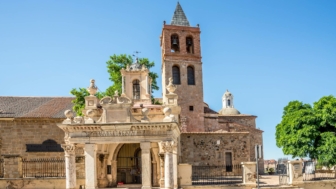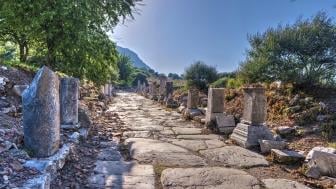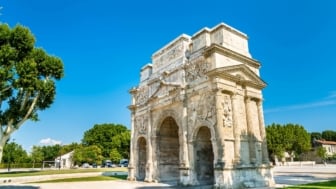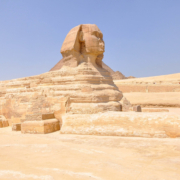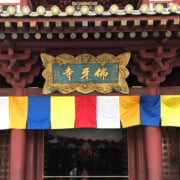Greece is the foyer of myths, tragedies, and legendary kings that transformed their kingdom into a wealthy and eternal land commemorated until our days. Mycenae is proof of a rich and powerful city-state that gave its name to an entire civilization that never stops revealing its secrets to us! Clio Muse created a fascinating audio tour about the citadel that initiates you to the world and everyday life of Mycenaeans as well as to the tragic destiny of the mighty king Agamemnon and the House of Atreus.
How was Mycenae created?
The myth says that the founder of Mycenae was the hero Perseus, the one who killed Medusa and saved princess Andromeda from a sea monster sent by the god Poseidon. After many adventures, Perseus found himself in this piece of land of Argolida. Searching for a sign, he dropped the cap from his scabbard, or according to another version, he picked up a mushroom and drank with joy the sweet water that flowed from it. And that was the just divine message he was looking for. He founded a new city and called the place Mycenae. But the legend goes on. It is said that Perseus employed Cyclops to erect the citadel’s walls because the Greeks believed that only one-eyed Cyclops had the strength and skills to build walls with the gigantic boulders that protect the city!
The legendary king Agamemnon
The history of Mycenae is filled with legends! To start with, Agamemnon was the powerful ruler and leader of the Greek army in the Trojan War. Even though there is no historical evidence of his existence, Homer, in his epic poems Iliad and Odyssey, presents Agamemnon as the King of Mycenae and describes him as a mighty but tempered ruler and warrior. It is Homer that informs the readers about his quarrel with Achilles and how, after his return to Mycenae, Agamemnon was murdered by his wife Clytemnestra just after taking his bath!
The Mycenaean civilization
Mycenae gave its name to an entire civilization. The Mycenaean civilization flourished mainly between the 13th and 15 centuries B.C. Influenced by the Minoan civilization, it was developed at first in mainland Greece and then expanded in Crete, in Cycladic islands, and later across the Aegean sea. It is estimated that 100 Mycenaean centers were established, but the most important was in Mycenae, Tyrins, Thebes, Argos, and Pylos, while the largest was Mycenae. The flourishment of trade and the production of objects of pottery, bronze, and luxuries, such as jewelry, carved gems, and glass items characterized the Mycenaean era. Due to commerce, Mycenaean goodies were found all over the Mediterranean, Levant, and even Spain. Although the Mycenaeans were brave warriors and skilled engineers and knew perfectly how to secure and protect their cities, their civilization collapsed suddenly around 1.100 B.C., and the cities were deserted.
What is left of Mycenae?
Even today, after a thousand years of abandonment, a visit to Mycenae reveals the splendor of the city characterized as the rich gold palace of its time. The Lion Gate is the main entrance to the complex of Mycenae and its emblem due to the elegance of the decapitated twin lions, and its construction believed that was made- as the walls- by the Cyclops. The remains of the Megaron, the Interior Grave. Circle A. of the Cult House, as well as the magnificent and mysterious Treasure of Atreus, give us an idea of the organization of the Mycenaeans and of their daily life.
The Museum
The Museum of Mycenae, located in the archaeological site and inaugurated in 2003, houses 35.000 artifacts found in the archaeological site of Mycenae, while 2.500 objects are currently on display, offering the chance not only to admire exquisite art pieces but also to learn significant information about the Mycenaeans.
Are you ready to get in the bath with Clytemnestra?

































